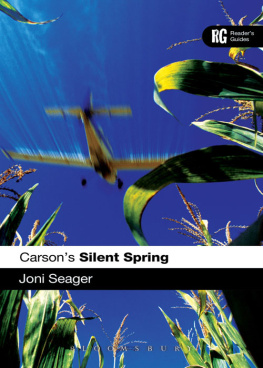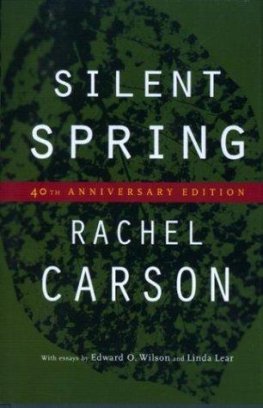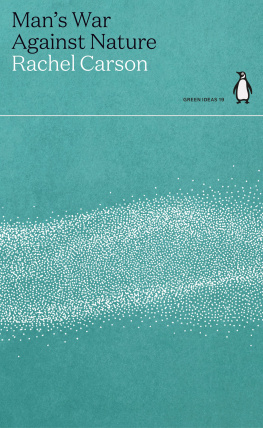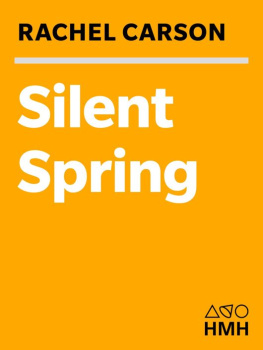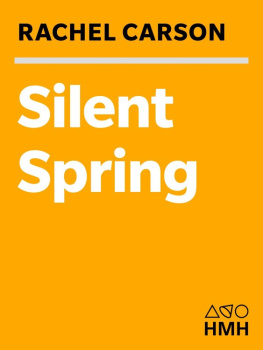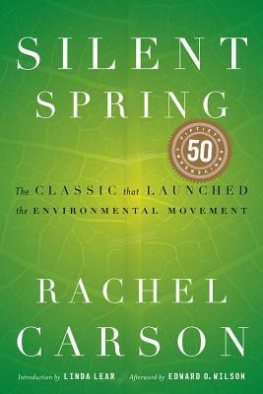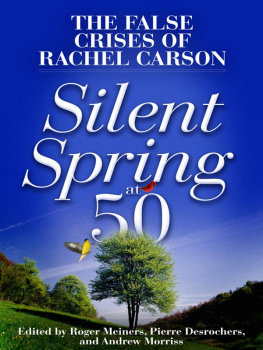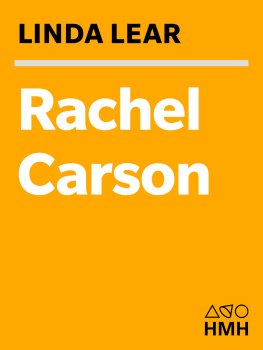BLOOMSBURY READERS GUIDES
Bloomsbury Readers Guides are clear, concise, and accessible introductions to key texts. Each book explores the themes, context, criticism, and influence of key works, providing a practical introduction to close reading, guiding students towards a thorough understanding of the text. They provide an essential, up-to-date resource, ideal for undergraduate students.

Long before it was hip to rage against the machine,
Rachel was raging.
Contents
T he writing of every book takes a village. I owe many people thanks for supporting, encouraging, and correcting me as I pushed through the seven stages of writing grieffrom exhilaration through misgiving and despair (and back again). I would like to acknowledge the many people without whom this book would not have been possible. However, importantly, before I do so, I must say that any remaining errors are my own entirely.
Cynthia Enloe, my partner, is at the heart of all that I do, and without her quick wit, sharp intellect, and unstinting encouragement and support, this, as with so much else, would not have been possible. My friends who were early readers, Laura Zimmerman, Gilda Bruckman, Candida Lacey, and Madeline Drexler, provided thoughtful feedback on my writing and thinking. And even though I perhaps didnt follow all of their advice at the time, Im sure they were rightsee note about errors, above. My deepest thanks to Julie Clayton who provided expert editorial services that rendered the manuscript into publishable form.
Linda Lear, the eminent biographer of Rachel Carson, gave me warm and unstinting advice, including some cautionary notes on biographical points where I was veering off course, and I have relied heavily on her generosity as well as on her rightly celebrated book, Rachel Carson: Witness for Nature. Conservationist Conor Jameson, author of Silent Spring Revisited, was generous enough to provide a review of the final draft manuscript; and my thanks also to an anonymous reviewer of the proposal manuscript. William OBrien at Florida Atlantic University answered astonishingly quickly a few specific queries I posed to him.
Michael Greenwood at Continuum Publishing first suggested that I write a book on Silent Spring as part of their Readers Guide series. Continuum later merged with Bloomsbury, and I was soon happily working with Bloomsbury editors Frances Arnold, Rhodri Mogford, and, most importantly, Emily Drewe. Emily provided editorial guidance above and beyond the usual, and I am particularly thankful for her efforts.
I received financial support from my academic institution, Bentley University, for some of the travel and other costs associated with this book, which facilitated its timely completion. I was grateful for opportunities to lecture on Silent Spring at the University of Iceland, the U.S. Friends Higher Education Association, and at the Nordic Geographers Meetingvenues where I tested and revised some of my ideas.
And, of course, I am most grateful to Rachel Carson herself. An extraordinary woman who persevered and triumphed against many odds, and left a legacy that is unmatched in the annals of environmentalism.
All Silent Spring page references are to the 1967 edition, 5th Fawcett Press printing of Rachel Carsons Silent Spring. New York: Fawcett Crest. (Original work published 1962 by Houghton Mifflin.)
Silent Spring by Rachel Carson
Copyright 1962 by Rachel L. Carson
Reprinted by permission of Frances Collin, Trustee
Hitchcock, Bees, and the
Syrian Civil War
I n Icelandic, the voices of spring are silenced: Raddir vorsins agna. In Indonesian, a more poetic double entendre: Musim Bunga yang Bisu, silent spring flowers. In English, Silent Spring. Not TheSilent Spring, which might suggest a singular and perhaps passing event, a one-time seasonal aberration. Rather, a simple, bold, unflinching, unmediated warning of a mute death about to settle upon us.
For most of us, unexpected silence is profoundly unsettling. Silence is impenetrable, incomprehensible. The tensest scenes in horror movies are not those filled with screams and moans or even eerie music; the most unbearable anticipation of terror creeps in under cover of deep silence. Alfred Hitchcock, Carsons contemporary, knew this; he made silence into high horror cinema art. Carson was no psychoanalyst, and theres no evidence that she knew Hitchcock, or even liked his films, but she brilliantly tapped, as did he, a deep vein of human dread by invoking silence.
In a two-word title, Silent Spring, Carson signaled the dark warning of her book: that man-made chemicals were killing the harbingers of spring, of life itself. Birds, but not only birdsinsects, fish, domestic animals: all dead or dying; all mute. In the season when we teeter on the edge of our winter-weary seats, straining for the first raucousness of rebirth and reawakening, no raucousness, no noise; instead, a slowly rising panic of silence. And then Carson drops the other shoe: No witchcraft, no enemy action had silenced the rebirth of new life in this stricken world. The people had done it themselves (p. 14). As the comic-strip character Pogo would say a decade later on Earth Day 1971, surveying a scene of environmental devastation, we have met the enemy and he is us.
Rachel Carson was heralded and hated in the wake of Silent Spring. Following its 1962 US release, Silent Spring raced around the world in more than 20 foreign-language translations, from Arabic to Swedish, and publication in dozens of countries. Worldwide book sales quickly reached the hundreds of thousands, and now, still mounting, are counted literally in the millions. Serialized, reviewed, and excerpted in uncountable numbers of journals, magazines, TV, and radio shows, Silent Spring reached even further into popular culture and consciousness.
Carson herself became a pivotal figuresymbolically, and as an actual agent of changein the wrenching cultural clashes of the 1960s. Succumbing to health impacts related to breast cancer in 1964, she lived long enough after Silent Springs publication to receive the full brunt of attack, but not to witness the full force of its transformative effect. And what a transformation! Silent Springnot by itself, but signallylaunched a new consciousness, a new regulatory approach to synthetic chemicals, and a new way of conceptualizing humans place in the ecological web. But Im getting ahead of myself.
Silent Spring is often talked about these days in rather hushed tones as a classic. What that usually means is that most people think they should have read itperhaps even believe they have read it, at some moment in the hazy pastbut in fact have not. A classic tends to sit petulantly on the shelf; there because its dimly-remembered merits earned its claim to shelf space, or perhaps there because the owner wishes to be seen making the claim of owning it. But a classic tends to sit mostly unperturbed.
In an amusing anecdote, Sandra Steingraber, a noted biologist and environmentalist, confesses this common experience. On being asked in 1990 to give a lecture on Carson for Earth Day, she recalls:
I reread Silent Spring. Or at least I initially thought I was rereading it. The words in the yellowing copy that I had on my bookshelfprobably bequeathed to me by my fatherdidnt sound familiar to me at all. I could not, upon further reflection, recall ever having been assigned to read the book by any professor in any of the many ecology and environmental classes I had ever taken. So, by chapter four, I was forced to conclude, with head-hanging shame, that I had never before actually read the damn book and that any flashes of recognition I felt were because Carson was forever being quoted by other authors in other books.
Next page
